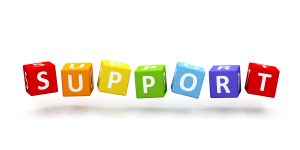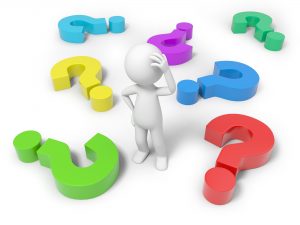Communication
During PTA the patient will experience communication difficulties due to impairments  of language, cognition, speech and psychological factors (anxiety and low mood) etc. Agitation may also impair the patient’s ability to communicate. Therefore support for communication is of paramount importance and the involvement of the Speech and Language Therapist is essential who can give advice regarding the best way to support communication, the patient’s ability to understand language and the use of any alternative and augmentative strategies. Basic strategies to support communication during PTA include:
of language, cognition, speech and psychological factors (anxiety and low mood) etc. Agitation may also impair the patient’s ability to communicate. Therefore support for communication is of paramount importance and the involvement of the Speech and Language Therapist is essential who can give advice regarding the best way to support communication, the patient’s ability to understand language and the use of any alternative and augmentative strategies. Basic strategies to support communication during PTA include:
- Always introduce yourself when entering the patient’s room/bedspace. Remind the patient of your name and role as necessary.
- Prior to carrying out care interventions, always tell the patient what you are going to do and why.
- Wear a name badge at all times.
- Make the most of periods when the patient is alert and calm to provide information and opportunities for social interaction.
- A calm, gentle approach should be used during communication. Never raise your voice or argue with the patient.
- Provide the patient with opportunities to converse outwith care based interactions. The patient will benefit from interaction for social purposes.
- When talking to the patient, use short, clear sentences. Repeat information as necessary.
- Don’t overload the person with too much information at once; give small amounts of information only.
- Give the patient extra time to process information and check they have understood.
- Communication may be tiring and/or confusing for the person, just sitting quietly with them, holding their hand may be sufficient.
- Talk about familiar people and events from the past. Using photographs is very helpful as a focus for communication and can support attention and memory.
- Reinforce any attempts the patient makes to communicate with you.
- Try to answer any questions they may have even if they repeat the same questions over and over again.
- Be patient if conversation is repetitive, confused and bizarre. It is important that the patient is interacting.
- If the patient has difficulty understanding spoken or written language, it may be necessary to consider alternative methods to support comprehension (e.g. use of pictures).
- If the patient is unable to verbally express themselves, seek advice on appropriate methods of augmentative and alternative communication. Ensure any communication aid is always accessible.
- Always reinforce the patient’s attempts to communicate. Respond to their attempts to communicate; smile and give positive feedback etc.
- Never talk about the person, their care etc in their presence without involving them in the conversation. This can be confusing, distressing and anxiety provoking. Necessary communication about the person’s health, progress, management etc should take place outwith their bed space if the person is unable to participate.
- Recognise that difficulties with communication (expressive and receptive) may contribute to agitation and behavioural difficulties (see below) and that agitation and challenging behaviour are a means by which the patient may be communicating something of importance (e.g. confusion, anxiety, distress, pain, discomfort, boredom, hunger).
Orientation
Helping the patient to understand their circumstances is essential in order to reduce  confusion, anxiety and distress (arising from cognitive and communicative impairment). Strategies may include:
confusion, anxiety and distress (arising from cognitive and communicative impairment). Strategies may include:
- Provide the patient with information about where they are, what has happened to them and the date. This will need to be repeated regularly.
- Reassure the patient that their family and friends are well. Inform the patient that family and friends know they are in hospital.
- Reassure the patient that they are safe and receiving care.
- Optimise the patient’s ability to learn new information by repeating it in the same way each time. Using a basic ‘script’ can be helpful.
- Provide clear orientation information using written and/or pictured material. Display where it can be easily seen by the patient. However, do not provide too much information as the patient may not be able to process large amounts and may become distracted and/or overwhelmed.
- If helpful provide orientation information in a folder. This may support attention and understanding.
- Provide photographs of staff members giving name and role. This may be helpful and reassuring for the patient and can be placed in a folder or on a wall (as long as the patient does not become overwhelmed by the amount of information displayed).
- Supporting the patient to learn their way around a new and potentially confusing environment. Clear signs (e.g. for the person’s room and toilet/shower facilities) are essential. Please be aware that brain injury may cause topographical disorientation, therefore the patient may need extra help to find their way around the ward.
Agitation and other Behavioural Difficulties
During PTA, the patient may display high levels of anxiety, distress and agitation, sometimes leading to challenging behaviour. Supporting the patient and family through this difficult stage of recovery is important. The following guidelines may be helpful:
- Information for staff and family regarding behavioural difficulties commonly observed during PTA is beneficial.
- Support staff and family to understand that the patient’s behaviour may not be consistently under volitional control during PTA. Therefore communication and behaviour which seems unusual, bizarre, challenging and out of character should not be taken personally.
- Typical triggers for agitation and behavioural outbursts include noise, high levels of stimulation, confusion, anxiety, pain and distress. Managing these effectively will lead to a reduction in these behaviours.
- Assessment of all potential contributory factors to agitation and behavioural difficulties will direct appropriate intervention. This will need to be repeated as the patient’s needs change.
- When communicating with the patient it is helpful to model a soft tone of voice and a calm approach.
- Management of the patient’s disorientation, other cognitive and communicative difficulties will help reduce confusion and agitation.
- Management of physical impairments, pain, nutrition, fatigue and sleep.
- Provision of clear and predictable structured daily routines.
- Use of distraction and redirection techniques is beneficial.

- Specialist advice (i.e. from liaison psychiatry/neuropsychiatry) should be sought with regard to use of medication which may help reduce agitation and behavioural difficulties. Side effects of some medications typically prescribed during PTA may actually increase confusion and exacerbate behavioural problems.
- Remain patient, progress can take time.
